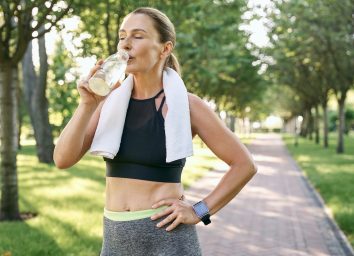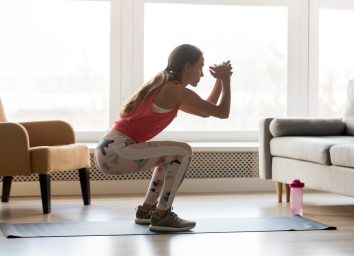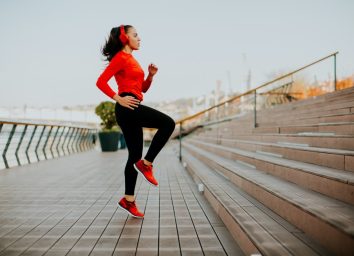Secret Tricks for Walking Your Way to a Flatter Stomach, Say Experts
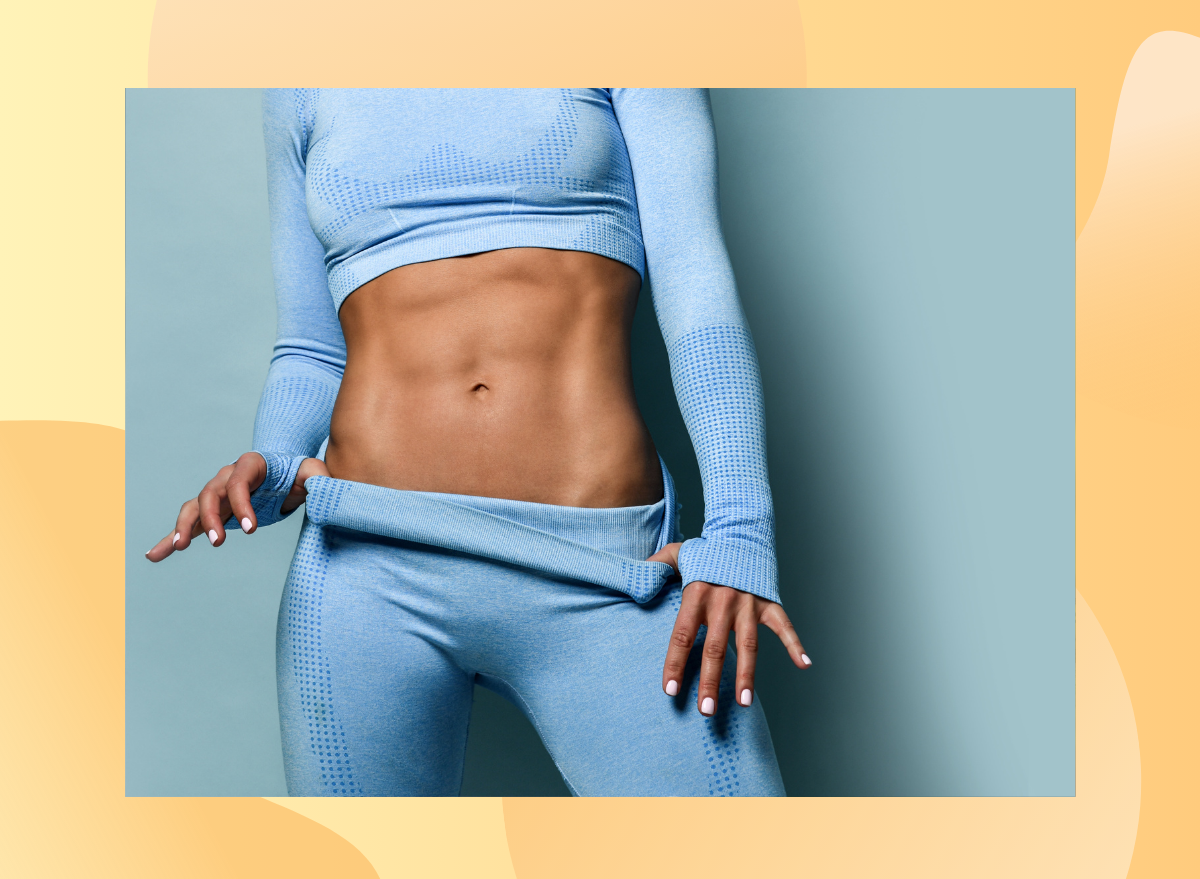
If you’d like to lose the fat around your midsection, there’s simply no getting around improving your diet. (For any further questions on eating better for fat loss, see here.) But as it pertains to exercise, you may be surprised to learn that you needn’t be logging long hours at the gym heaving heavy weights—or running seven miles-per-day, seven days-per-week—to see the results you want. If walking is your exercise of preference—and you’re committed to making your walks brisk—you can lose weight and achieve a flatter stomach.
For proof, know that in one study, published in the Journal of Exercise Nutrition & Biochemistry, researchers probed the effects of walking on obese women and found that it was particularly effective at reducing belly fat, among other health benefits. In another study, published in the journal JAMA Internal Medicine, researchers found that men and women between the ages of 40 and 65 who lived sedentary lifestyles managed to lose weight when they walked for 12 miles every week. In the case of the latter study, the study participants didn’t meaningfully alter their diets.
If you’re an exercise walker looking to achieve a flatter stomach, we at ETNT Mind+Body reached out to some trusty fitness experts for their best tips and tricks for using your walks to burn more fat around your midsection and for seeing results faster. Read on to know what they are. And whatever you do, don’t forget the best walking tip of all: You need to go faster. For more on that, see why Walking This Way Can Add 20 Years to Your Life, Says Top Scientist.
Take a Walk After a Big Meal
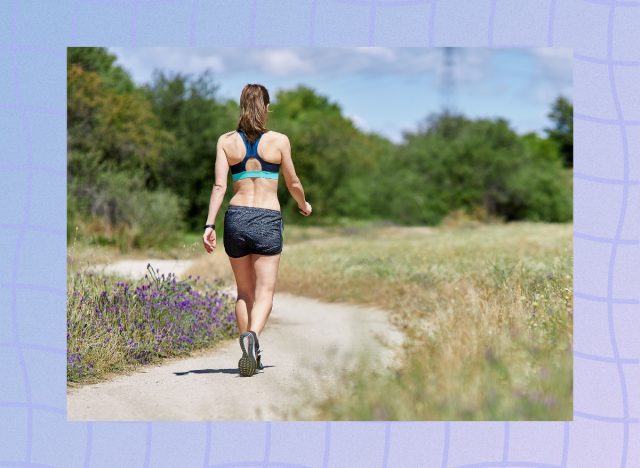
According to celebrity trainer Joey Thurman, CES, CPT, FNS, you can enhance the fat-burning effects of walking by hitting the pavement shortly after you eat a big meal. “Taking a 10-30 minute walk after your meals of the day will help flatten that stomach,” he says. “Why? Well, walking after will help with nutrient absorption, lower insulin response, and help distribute your calories as fuel instead of fat.”
There’s science to back him up. According to a 2016 study that analyzed the effects of walking on people who suffer from Type-2 diabetes, published in the journal Diabetologia, it was found that a 10-minute walk right after consuming a meal helped test subjects lower their blood sugar levels. And for more on the health benefits of walking, see how This One Walking Exercise Can Predict Your Risk of Early Death.
Break Up Your Walks with Rapid-Fire Bodyweight Moves
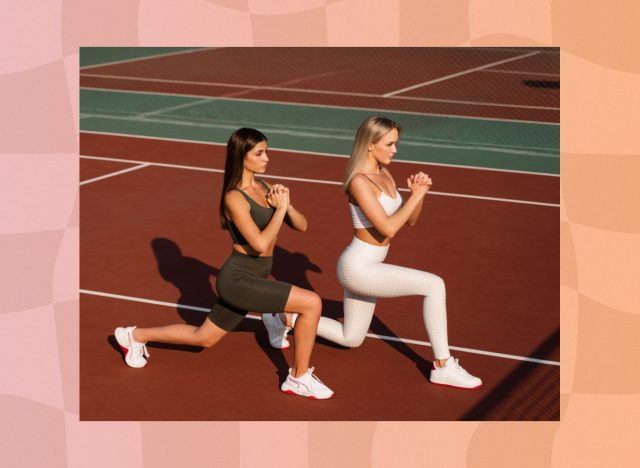
“While getting a flatter stomach is mostly about nutrition, there are different ways then you can burn more calories while walking which can help you get in a calorie deficit or increase your deficit,” says Amir Yazdanparast, a certified exercise physiologist and strength and conditioning specialist, with a master of science degree in kinesiology. “Fast walking, long-distance walking, walking uphill, weighted walking, walking upstairs, and doing different exercises while walking, like walking lunges or some upper body exercises, all can help you burn more calories while walking.”
If you’re game, break up your walks with squats, lunges, or pushups, all of which will elevate your heart rate even further, increase your conditioning, and help you transform your walk into a killer workout.
Be Mindful of Genetics—and Stay Patient

For losing more fat while walking, “you should continue what you’re doing with a focus on burning more calories on each walk,” advises Maxwell Kamlongera, of Mx Fitness. “Don’t be demotivated and think you’re doing something wrong if you’re not losing belly fat as quickly as your friend or partner, despite doing the same walks—it’s genetics.”
He explains further: “For better or for worse, fat distribution is genetically determined—we can do nothing about it—and each one of us have different stubborn fat areas. So when we lose fat, the areas on our bodies that contain the least amount of fat start trimming down first, and the areas with the most fat will be the last to go.”
Assuming diet your diet is healthy, “the fat you are working to get rid of will eventually melt off with time and commitment,” he says. “The only challenge is you might be someone who stores most of their fat around their stomach, so you’ll have to be extra patient.” And if you’re someone who walks for exercise, please enjoy these 7 Things Every Exercise Walker Finds Totally Annoying.
Wear a Weighted Vest
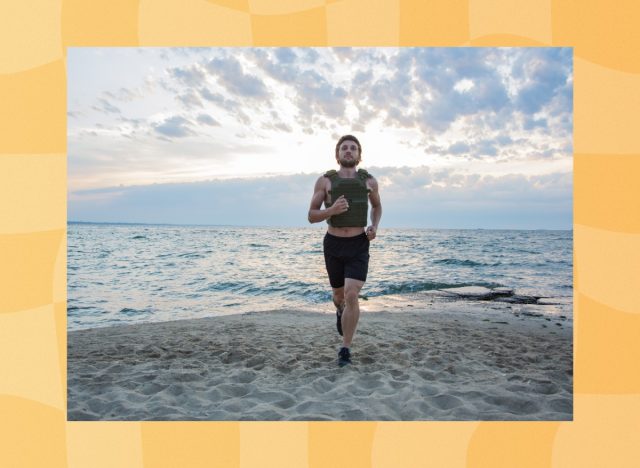
“Wearing a weighted vest while doing cardiovascular activities helps train the body with aerobic and anaerobic benefits,” says Allen Conrad, BS, DC, CSCS the owner of Montgomery County Chiropractic Center, in Pennsylvania.
“Due to the additional added weight of the vest, the heart will pump harder, increasing the aerobic capacity and your VO2 max, while postural muscles will help build core strength.”
Another bonus to weighted vests? “You can push your workout to the next level, as it will challenge your body to work more efficiently and help you focus on proper breathing and proper form during cardio,” he says. “Try wearing a weighted vest as an extra twist on the walking program to help flatten your stomach.”
Supplement Your Walking Regimen with Strength Training
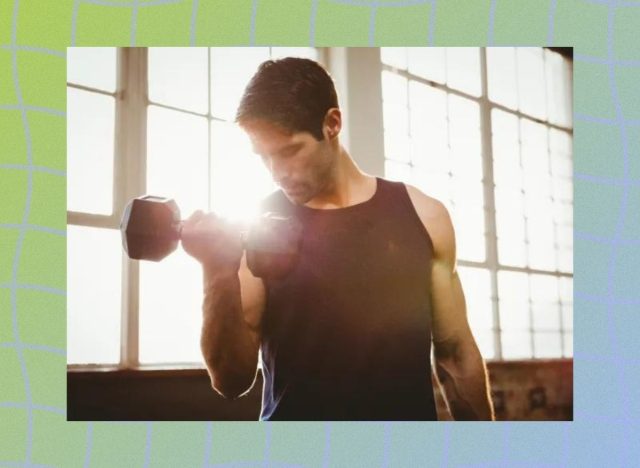
According to Garret Seacat, C.S.C.S., performing aerobic exercise is better for losing weight than strength training—but combined you’ll lose even more. “If your goal is weight loss, aerobic exercise (walking or running) burns a statistically significant more amount of fat than weight lifting,” he says. “However, when combining both aerobic exercise and lifting weights for a total of 30 minutes a day, 5 times a week, people lose significantly more.”
So consider weaving some other workouts into your walking regimen, such as This 5-Move Workout That’s Perfect for Toning Your Figure Fast.
Do Walking Intervals
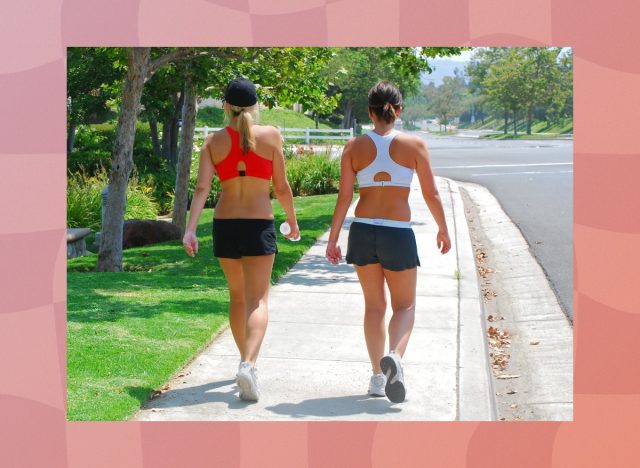
“Interval walking will provide a better calorie burn than steady-state, or casual, walking because it will elevate the heart rate into the proper zone,” says Timothy Lyman, CPT, NASM-PES, the director of training programs for Fleet Feet Pittsburgh.
Here’s his advice for finding the right zone: “There is no perfect pace for interval walking. The effort level simply needs to feel hard or about 70-80% of what an individual is capable of. What should the steady part feel like and what should the speedy part feel like? I go back to push pace and recovery pace here. The speedy part should feel like you’re working towards being out of breath, while the relaxed part should feel easy enough that your heart rate drops.”
Tom Holland, MS, CSCS, CISSN, an exercise physiologist and author of The Micro-Workout Plan: Get the Body You Want without the Gym in 15 Minutes or Less a Day, agrees. “By varying the speed of your walk, especially adding in some faster pace interval work, you will raise your heart rate and increase your caloric expenditure, helping you lose more weight over time,” he says. If you’d like one really hardcore interval walk, he offers this one:
-Walk at an easy pace for 10 minutes to get your body loose and comfortable.
-For 30 seconds, do a hard power walk—walking for as fast as you can—up a hill. Immediately afterward, slow back down to an easy walk for recovery back down the hill. Repeat this cycle 9 more times.
-Cool down by walking at an easy pace for 10 minutes.
And for more on walking faster, see how This 7-Minute Walking Trick Can Add Years to Your Life, Say Experts.
